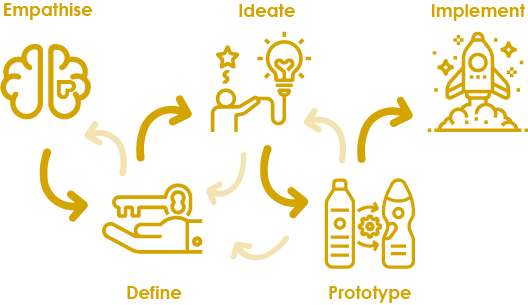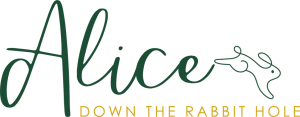Services
Supporting companies in innovation can be interpreted quite broadly. So how exactly do we do that?
Our method is based on the principles of design thinking. For those who don’t quite know what this entails: it is an alternative to the traditional way of developing new products and services, or finding solutions to complex challenges. The key question here is: ‘who are you doing it for’? After all, don’t companies and organisations want to make products and offer services that people really need and want? And researchers want their research to add value to our society and our future, right?
Still a bit fuzzy?
Let us briefly list the main features and differences with the more traditional development processes.
Obviously, a classic development process also takes consumer trends and preferences into consideration. But design thinking takes this a lot further: it involves users in almost every phase of the process, not only quantitatively, but also in person. And we don’t just ask questions, we let them think along and listen to their criticism and suggestions. Design thinking wants to put an end to making assumptions: we do not rely on what we think they want, but we ask them instead. Gaining an in-depth view of people’s drivers and needs is an essential element of this process (’empathise’).

"Everyone is looking for the gap in the market, but is there also a market in that gap?"
Another key feature of design thinking is defining the problem, challenge or need to which we want to provide an answer. Are we answering the right question? Being critical is the clue, because every assumption is challenged.
It is also characterized by an extensive substantiation of challenge and solution. Meaning that we work with prototypes, detailed scenarios and analogies to comparable situations, as much as possible. All this to make problem and solution as quickly as possible, as concrete as possible. Especially since you are working with ordinary people, who will better think along if they can visualize and experience the situation properly.
Finally, unlike the classical linear development processes, the design thinking process is highly iterative. When we find we are no longer quite on the right path and/or the needs are no longer clear in our minds, we retrace our steps. As we build in many checkpoints, you can quickly pick up on this, and redirect the project before you make massive investments in production, branding and market introduction.
What kind of questions can it provide an answer to?
How do we go about this?
We decidedly go for those in-depth insights into the questions and wishes of consumers, and how they see your company or organisation, products, services and communication. And how the consumers would fulfil those wishes, versus how you would. We achieve this with a combination of co-creation sessions and surveys, thus collecting both qualitative and quantitative data. The former mainly tells you what people wish for, what triggers them and how they see your products and concepts. The second provides information on who prefers what and where.
Co-creation sessions are our own speciality. For these, we can rely on a pool of volunteers – our ‘inventors’ – with different backgrounds and profiles, who committed themselves to think about new products, product ranges, services and other challenges together with you. Or we can organise co-creation sessions with customers, suppliers or partners, in case that is more relevant.
But we also focus on other forms of qualitative research, such as in-depth interviews, moderating dialogues between citizens and experts, and collecting user experiences.
Want to know what kind of information comes out of these co-creation sessions?
We can also provide you with quantitative information, analyses and validations. Via our partners we have access to many tools and possibilities to gain insight in the complete picture. We can launch surveys via an app, collect online feedback or analyse information from the worldwide web. Or we can, via our partners get feedback on taste, smell and other sensory aspects – because these are crucial for many products.
And this translates into our services
Understanding and engaging consumers
Who are you doing it all for? Probably in part for yourself, because you like doing it, but above all for the consumer, the citizens, and society.
To know whether you are on the right track, it is always a good idea to, now and then, ask the people on the receiving end how they see things. Or even better: to involve them in the development of future products, services or research.
Co-creation as a tool
Co-creation is creating together. Sitting around the table with other parties, such as the consumer. Because launching new products, product concepts or a whole new product range on the market is not as simple as it might seem, especially when it comes to basic products like food.
By involving others in your creative process, you get a more objective view on your ideas, and learn to look at them from a different angle. And doing that will drastically reduce your failure rate.
Communication
Just because the message is clear to yourself, doesn’t mean it is for the rest of the world. You are an expert in your own field, and that makes it hard to assess how much – or how little – others know, and how a certain message comes across.
Luckily, we have plenty of expertise in translating complex information into a message that everyone can understand.
Consultancy
With more than 20 years of experience on the counter covering R&D, marketing, business development and the broad innovation landscape, we have gained a lot of expertise on markets and trends, feasibility of ideas and design thinking. We’d like to share this expertise with you. Take a look at what we can do for you.
